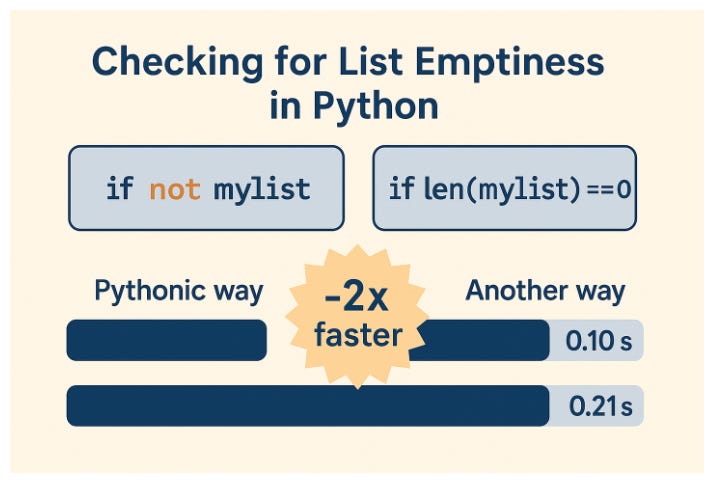Python Performance: Why 'if not list' is 2x Faster Than Using len()
Python Performance: Why 'if not list' is 2x Faster Than Using len()

blog.codingconfessions.com
Python Performance: Why 'if not list' is 2x Faster Than Using len()

Python Performance: Why 'if not list' is 2x Faster Than Using len()

Python Performance: Why 'if not list' is 2x Faster Than Using len()
